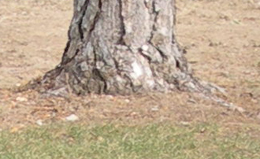Happy Holidays from Outdoor Design Group!
This is the official blog of Outdoor Design Group, Colorado Landscape Architects. For more information about our business and our services, click here.
This is the official blog of Outdoor Design Group, Colorado Landscape Architects. For more information about our business and our services, click here.
As you are all probably aware, we live in a semi-arid climate in Colorado. Unless you have a landscape comprised entirely of native plants, you need to be cognizant of the occasional need for winter watering to maintain healthy landscape plants. This can be a challenge due to the fluctuating temperatures we experience. And unless you want to re-winterize your irrigation system each time you winter water, you likely will be watering by hand.
Generally speaking, if there has been no natural precipitation for a month and the temperatures have been above normal for your region, trees and shrubs planted within the last year will benefit from receiving supplemental  water. Only water when the air and soil temperatures are greater than 40 degrees Fahrenheit, with no snow cover. Plants that are on the south or west side of your house are more likely to dry out before those on the east or north. And plants that get reflected heat from buildings, walls and fences or that are in windy sites are more likely to dry out more quickly.
water. Only water when the air and soil temperatures are greater than 40 degrees Fahrenheit, with no snow cover. Plants that are on the south or west side of your house are more likely to dry out before those on the east or north. And plants that get reflected heat from buildings, walls and fences or that are in windy sites are more likely to dry out more quickly.
Recently planted deciduous trees are most in danger from winter dry spells. Established trees are somewhat immune from winter drought, unless the dry spell is extreme. If you are uncertain if your tree is established, observe this advice from Colorado State University Extension Service: “Trees generally take one year to establish for each inch of trunk diameter. For example, a two inch diameter (caliper) tree takes a minimum of two years to establish under normal conditions.“ Water the newer and younger trees once a month with 10 gallons of water per each trunk diameter, measured at 6 to 12” above the ground. Let the water soak in slowly to a depth of 12”.
Similarly, recently planted shrubs are more susceptible to dry winter conditions than more established shrubs. For new shrubs, water them with 5 gallons, two times per month. Small established shrubs need 5 gallons once per month. Large established shrubs need about 18 gallons per month.
Newly planted evergreen trees and shrubs are also very sensitive to winter drought, because they don’t drop their leaves or needles so they still are transpiring moisture through the needles all year long. Some arborists recommend misting the leaves/needles with water rather than focusing on the soil. Some of the water will trickle down and get into the soil. Consider doing this 3 times a month for those new evergreens. This should help your evergreens avoid the brown damaged needles that occur during drought stress. Evergreens that need special attention during winter drought are spruce, fir, arborvitae, yew, Oregon grape-holly, boxwood, and Manhattan euonymus.
Obviously, if we receive enough precipitation, no supplemental watering is needed. The rule of thumb here is if snow still covers the ground or if there was a significant snow fall (6” or more) at least once in the last month, you probably don’t need to water that month. But if we have a dry spell and you’ve not properly watered your landscape plants, they may become weakened, making them prone to insects and disease.
If you have a recently planted lawn, consider giving it ½” of water per month during winter dry spells. Established lawns shouldn’t need supplemental watering because bluegrass goes dormant in winter.
Do not neglect to properly mulch all your trees, shrubs and perennials. This will help to keep your plants from further drying out.
Once you have watered your landscape plants, don’t forget to unhook your hose from the hose bib so as to avoid frost damage to the pipes once temperatures drop back down below freezing.
This is the official blog of Outdoor Design Group, Colorado Landscape Architects. For more information about our business and our services, click here.